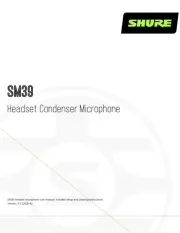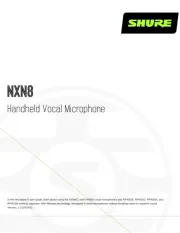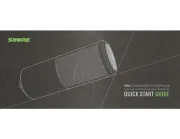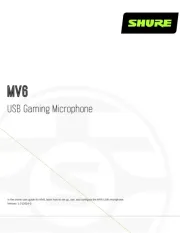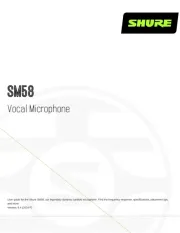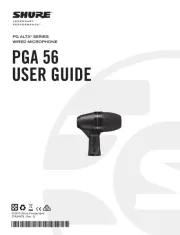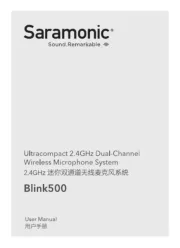1/5
SM58 -- Vocal Microphone
General Description
The Shure SM58 is a unidirectional (cardioid) dynamic vocal microphone for professional vocal use in sound rein
forcement and studio recording. A highly effective, builtin, spherical filter minimizes wind and breath “pop” noise. A
cardioid pickup pattern isolates the main sound source while minimizing unwanted background noise. The SM58
has a tailored vocal response for a sound which is a world standard. Rugged construction, a proven shockmount
system, and a steelmesh grille ensure that even with rough handling, the SM58 will perform consistently. Out
doors or indoors, singing or speech, the SM58 is the overwhelming choice of professionals worldwide.
Features
•Performance tested, industry standard
•Uniform cardioid pick-up pattern for maximum gain before feedback and excellent rejection of off-axis sound
•Tailored frequency response specifically shaped for vocals, with brightened midrange and bass roll off to control
proximity effect
•Advanced pneumatic shock mount system that minimizes transmission of mechanical noise and vibration
•Steel-mesh grille and enamel-coated metal construction resist wear and abuse
•Effective built in pop-filter reduces undesirable wind and breathe noise
•Furnished with zippered storage bag and break-resistant stand adapter
•On/Off switch (SM58S only)
•Extremely durable under the heaviest use
•Shure quality, ruggedness and reliability
Placement
General Rules for Use
•Aim the microphone toward the desired sound source (such as the talker, singer, or instrument) and away from
unwanted sources.
•Place the microphone as close as practical to the desired sound source.
•Work close to the microphone for extra bass response.
•Use only one microphone to pick up a single sound source.
•Use the fewest number of microphones as practical.
•Keep the distance between microphones at least three times the distance from each microphone to its source.
•Place microphones as far as possible from reflective surfaces.
•Add a windscreen when using the microphone outdoors.
•Avoid excessive handling to minimize pickup of mechanical noise and vibration.
®

